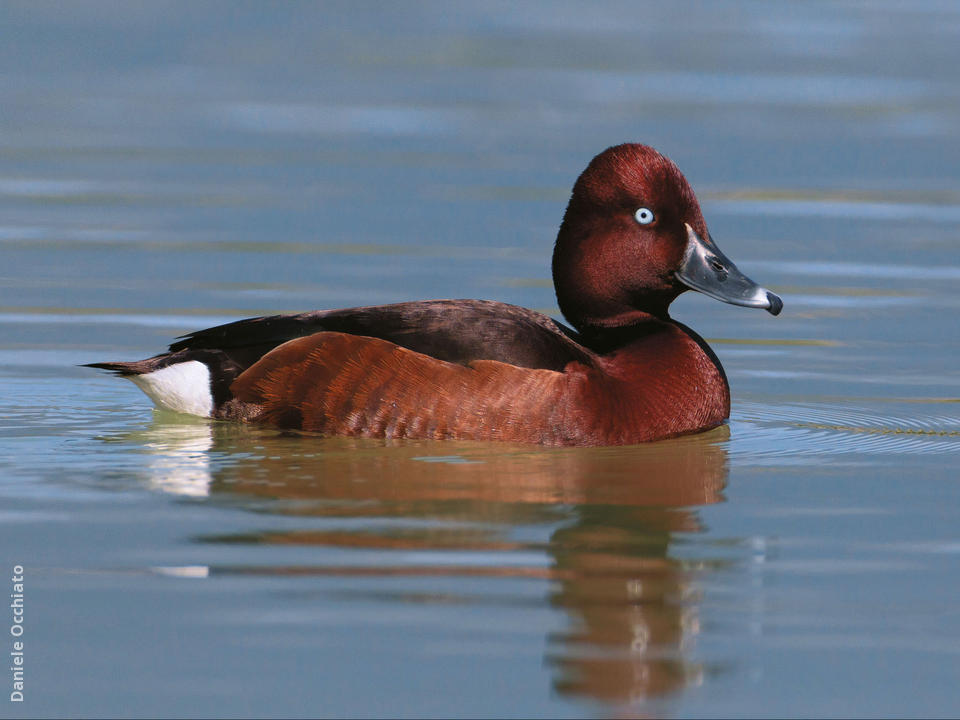Ferruginous duck: Red Data Book of Armenia

Ducks, geese and swans — Anatidae
Status. A non–migratory species of limited distribution. Listed in the IUCN Red List of Threatened Species (ver. 3.1) as Near Threatened NT. According to IUCN criteria categorized as Vulnerable VU D1.
Distribution. Distributed in Europe, Mediterranean countries, Russia, Ukraine, Asia Minor, Central Asia, South Caucasus, Iran, North Africa.
Distribution in Armenia. Occurs in low numbers during migrations in the Lake Sevan basin, on fish ponds and wetlands of the Ararat Valley and on lakelets of Stepanavan.
Habitats. Lives in water bodies with lush reedbeds and other riparian vegetation. Before subsidence of the Lake Sevan the nesting grounds were located on the Lake Gilli. At present, nestles on artificial and natural lakelets of the Ararat Valley.
Biological traits. The nest is built on shores and banks with rich vegetation, on grassy hillocks or, seldom, afloat. Eggs are light yellow, 6–14/clutch, size 45–52 mm. Hatchlings feed nearby the reeds and conceal there when in jeopardy.
Population size and its trends. Five to thirty breeding pairs have periodically been recorded during the nesting season. During migrations occurs in flocks of 50–150 individuals. Has always been rare.
Major threats. Lack of nesting grounds. Disturbance on natural and artificial lakelets of the Ararat Valley.
Conservation measures. Protected in Sevan National Park. The rise of water level in the Lake Sevan would likely lead to the recovery of nesting grounds. Fish farmers and local communities are involved in awareness–raising activities. It is essential to estimate population size throughout a year, identify suitable nesting grounds and ensure their conservation, declare the Armash fish ponds an Important Bird Area and to strengthen anti–poaching activities during migrations and wintering.
Suggestions
 The Ministry of Environment sent a letter international partners to draw their attention to the real danger of environmental disasters as a result of Azerbaijan's large-scale aggression towards the territory of Armenia
The Ministry of Environment sent a letter international partners to draw their attention to the real danger of environmental disasters as a result of Azerbaijan's large-scale aggression towards the territory of Armenia
 Vicia pisiformis: Red Data Book of Armenia
Vicia pisiformis: Red Data Book of Armenia
 Vavilovia formosa: Red Data Book of Armenia
Vavilovia formosa: Red Data Book of Armenia
 Trigonella capitata: Red Data Book of Armenia
Trigonella capitata: Red Data Book of Armenia
 Trigonella astroides: Red Data Book of Armenia
Trigonella astroides: Red Data Book of Armenia












